Most modern offices are equipped with projectors for various presentations, viewing photos and videos, as well as demonstrating a variety of documents. However, few who wish to purchase projectors for the office are well versed in their functionality and types in order to make the right choice. In this article, we will find out what this technique is like, what characteristics they possess and tell you how to choose a projector for the office.
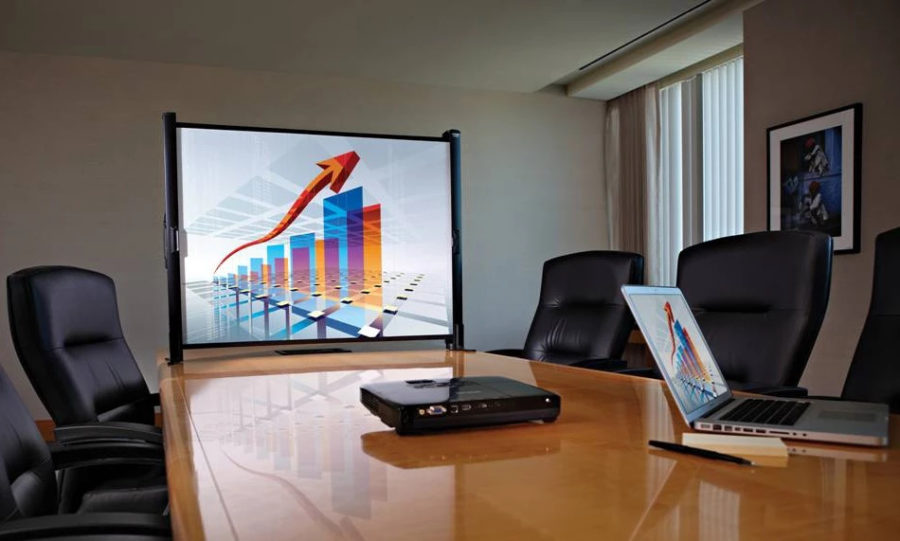
Content
What are the projectors?
According to the type of matrix, they are DLP, LCD, CRT, 3LCD and D-ILA type.
- DLP are equipped with a digital matrix from microscopic mirrors. Tube light is reflected from a microscopic chip, consisting of the smallest rotating mirrors and responsible for its pixel. They have excellent picture image and are more suitable for home theater. Of the minuses: high price, poor black color.
- LCDs are equipped with an LCD matrix through which lamp light projects a picture. Such projectors have a low price and fairly light weight, so they are considered ideal for office presentations. Of the minuses: insufficiently high image quality and very poor black color.
- CRTs are equipped with cathode ray tubes. They have good color reproduction and rich black. No graininess of the image. Of the minuses: heaviness, noise, the inability to move the projector after fixing, difficult setup.
- 3LCDs are equipped with three LCD matrices, mirror systems that share the image, and prism systems that collect the image. The highest color reproduction, good image quality and reasonable price. Moreover, such projectors consume a small amount of energy. Of the minuses: not enough "black" black.
- D-ILAs are equipped with a liquid crystal matrix that does not transmit light, but reflects it, amplifying it in a prism with the help of another lamp. Excellent clarity, color reproduction and rich black. Of the minuses: high price.
Main characteristics
- Resolution and format. The detail of a video picture depends on the number of pixels of liquid crystals. High resolution indicates high image quality. High quality means a high price. For office work, an extension of 800x600 is most often enough, and if the budget allows, you can also choose 1024x780, 1280x1024, 1600x1200 for a clearer quality of the projected image.
- The brightness of the light flux. The clarity of the picture is equal to the brightness of the light. For projectors, lamp brightness is measured in ANSI lumens (Lm). For large rooms, it is recommended to take projectors with brightness above 3500 lumens. For medium audiences, a luminous flux in the range from 2500 to 3500 lumens is suitable. Devices with a brightness below 2000 lumens are recommended to be purchased in completely darkened audiences.
- Contrast. The ratio of the luminous flux of white and black screens is called the contrast of the projector. This indicator is important only when it comes to darkened rooms.
- Zoom Thanks to this indicator, you can reduce the image size without moving the projector.
- Lenses. Projectors with short-focus lenses cannot be placed further than five meters from the screen, unlike projectors with long-focus lenses.
Screen selection
When choosing a screen, first you need to understand the size of the room and the location of the screen. Secondly, think about sound insulation and darkening of the room. The recommended distance between the canvas and the first row of the audience should be at least twice the height of the screen, and the distance between the screen and the last row should be at least six screen heights.
Canvases of screens are: reflective, retroreflective and matte.
- Reflective reflect projected at an angle of incidence of light.It is best to install such paintings under the ceiling. Due to this, the reflection of the image will be directed directly to the audience, which will affect the image material.
- Retroreflective canvases reflect projected directly onto the light source itself, so the projector and the audience should be located opposite the screen.
- Matte canvases reflect light throughout the room, which opens up a wide selection of installation locations without any loss of image quality.
Functional interface
Key features for multimedia projectors include:
- screen menu;
- remote-controlled remote control;
- vertical and horizontal inversion;
- adjustment of light, contrast, projected quality;
- customization of the color palette;
- work with 3D material;
- control with the screen mouse;
- correction of keystone projection;
- energy-saving mode of use;
- and others.
In some devices, you can find the following additional functionality:
- the permissibility of changing lenses;
- interchangeable lenses that can change the focus of the lens;
- use as an interactive whiteboard;
- automatic keystone correction and adjustment;
- the ability to project onto the surface in different colors;
- instant disconnection of the device from the network;
- image freeze;
- the ability to repeatedly increase a certain area of the image;
- simultaneous display of several images from different sources;
- USB input for flash drive;
- automatic adjustment of the power of the light stream, based on the illumination of the audience
- and others.
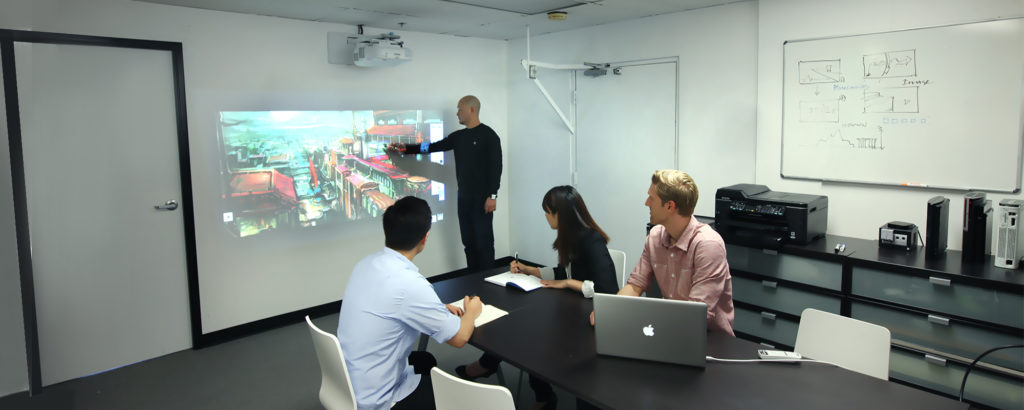
Portable or mobile projectors
As you already understood, the business projectors installed in the room are called stationary, however, they also distinguish portable (they are also mobile or pocket). Positive aspects of portable projectors:
- the possibility of free movement;
- little weight;
- small dimensions.
Portable projector can connect any user. It is ready to work immediately after switching on, but it also has negative aspects:
- low brightness of a light stream;
- poor image quality;
- limited functionality.
So, you work in the field and, despite the above disadvantages, decided to purchase a portable projector. In this case, make sure that:
- The projector of your choice has a keystone correction program and a mechanical lens shift;
- has the highest brightness that only happens with such devices;
- Has the format and resolution necessary for your types of presentations;
- equipped with sound speakers.
How to choose a projector for presentations among a huge number of options, we will decide by considering the best projectors for the office of 2019. The review will cover such instrument manufacturers as: BenQ, Viewsonic, Acer, Epson and Sony.
Overview of the best projectors
BenQ MS517H
DLP projector.
Resolution - 800 × 600.
Brightness - 3300 Lm.
Power consumption - 270 watts.
Weight - 1900
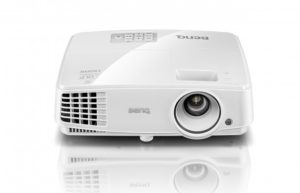
Opportunities:
- SmartEco Mode
Adjusting the light power at maximum energy saving, while maintaining the best ratio of contrast and brightness of the projected. - LampSave Mode
It reduces the frequency of replacing the lamp, which significantly reduces the cost of maintaining the device. - EcoBlank Mode
If the projector is not used for three minutes, it automatically switches to a mode that allows you not to waste energy in vain. - 3D format support.
ViewSonic PJD5151
DLP projector.
Resolution - 800 × 600.
Brightness - 3300 Lm.
Power consumption - 260 watts.
Weight - 2200 g.
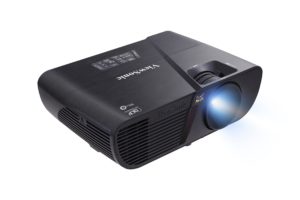
Opportunities:
- SuperColor Technology
Special technology providing the highest color reproduction with a wide range of color gamut. - Smart Restart Function
If the projector is not used for three minutes, it automatically switches to standby mode. - Mouse button
This button provides the ability to control the projector in the style of a computer mouse. - Lamp door on top
Facilitates the process of replacing lamps and servicing the device. - Templates built into the projector.
- 3D format support.
Acer x113
DLP projector.
Resolution - 800 × 600.
Brightness - 2800 Lm.
Power consumption - 235 watts.
Weight - 2500 g.
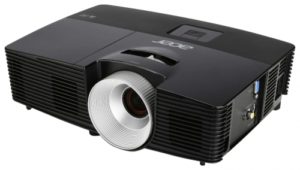
Opportunities:
- Acer Color Technology
It guarantees a bright and clear image of text and pictures even at a great distance. - Acer dust shield
It does not allow dust to accumulate, so that the brightness of the projected is not lost, but the need to frequently service the device is lost. - It has 4 ceiling mount options.
- Switching to standby mode.
- 3D format support.
Epson EB-S31
3LCD projector.
Resolution - 800 × 600.
Brightness - 3200 Lm.
Power consumption - 200 watts.
Weight - 2400 g.

Opportunities:
- Universal projector suitable for both home and office.
- Saturated colors even in daylight.
- The ability to broadcast material simultaneously from different sources.
- Case slider
A slider located on the body allows you to quickly correct keystone distortion of the projected. - Eco mode
If there is no signal, it automatically goes into sleep mode for 5 minutes, in which the energy consumption is reduced by 70%.
Sony VPL-EW255
3LCD projector.
Resolution - 1280 × 800.
Brightness - 3200 Lm.
Power consumption - 240 watts.
Weight - 3900 g.
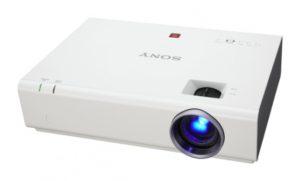
Opportunities:
- It has an energy-saving ECO function, which, in the absence of any signals, is activated after 10 minutes.
- Sony BrightEra Technology
Provides excellent image quality in daylight and in dark rooms. - The ability to simultaneously connect 8 devices.
- The model is equipped with a built-in speaker with a power of 16 watts.
So, based on all of the above, we can draw the following conclusion: the average office projector should have a brightness of about 2500-3500 lumens, work in both light and dark, have a resolution of at least 800 × 600. As for the other characteristics, they can be selected taking into account the individual tasks that the device must perform. It is not necessary to purchase a device that is too overloaded, this may affect the quality of its operation. Also, do not take a too simple device. Who knows what awaits you in the future. Perhaps some function is not relevant now, but in a year you will need it urgently. Think ahead so as not to miscalculate.
Regarding manufacturers of projectors - in this review we examined five different brands. Of course, each of these brands has worthy model representatives, so when choosing a company, rely on your taste and budget opportunities. We hope you make the right choice, guided by the recommendations of this review, and become the happy owner of the most suitable projector of your dreams in all respects.